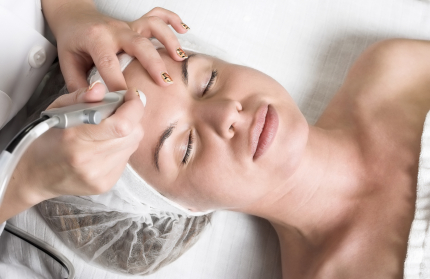One of the most popular skin care procedures utilized by women in 2008 was laser skin resurfacing. According to the American Society of Plastic Surgeons, over 400,000 women had this procedure done to fight the signs of aging.
Laser skincare treatment is effective at improving the appearance of fine lines and wrinkles and in reducing the appearance of scars, acne, and hyper pigmentation. It can be used for small areas, such as lines around the mouth and face, or can be used to treat large areas of the face.
the appearance of scars, acne, and hyper pigmentation. It can be used for small areas, such as lines around the mouth and face, or can be used to treat large areas of the face.
Laser skin resurfacing has many advantages over other skin care procedures because it does not cause discomfort, bleeding or bruising and has a quick recovery time. Technology is improving all the time, and newer lasers are safer and gentler than those of the past.
Laser skin resurfacing is also versatile in that it can be used not only to treat fine lines and wrinkles, but it is also effective in treating acne. Acne laser resurfacing is a revolutionary skin care alternative to peels and retinol, and provides long lasting results.
How does Laser Skin Resurfacing work?
Laser resurfacing works by removing the outer layer of skin so that new skin can grow and fill in the wrinkles and scars. Chemical peels and microdermabrasion work in a similar manner, but are more invasive and less gentle.
Resurfacing skin with a laser produces predictable results by targeting the superficial and deep layers of the skin accurately. The laser penetrates the skin and removes enough outer layers to uncover the layers that do not have the imperfection. Once that layer is uncovered, then the skin rebuilds young, healthy skin.
Your doctor will examine your skin and determine the type of laser therapy that would be most appropriate and design a treatment plan for you.
What Can I Expect During Treatment?
Before your procedure, your dermatologist may prescribe topical creams, lotions or other medication to prepare your skin for the procedure. Follow their directions exactly, as this will give you the best results.
The procedure is done as an outpatient, and can be done in your doctor’s office. During the procedure, you will receive a topical and local anesthetic. You may also receive an intravenous anesthetic, but you will not be asleep. The type of anesthesia will depend on the level of resurfacing done. Have someone available to drive you home.
Treatment times depend on the amount of resurfacing required. They typically range from fifteen minutes to 90 minutes. Depending on the type of damage that needs to be repaired, the cosmetic dermatologist may move the laser over the area more than once. It feels like tiny rubber bands snapping against your skin. Most people only need one treatment, but depending on the type of condition being treated, multiple resurfacing treatments may be required.
What can I expect During Recovery?
Temporary side effects reports have been swelling and mild discomfort, easily treatable with ice and anti-inflammatory medications. Red crusted areas may develop: do not pick at them or they can become scars. It is important to avoid sun exposure during the healing period, which can be up to two weeks.
